Gifted and Talented: A Teacher's guide
What are gifted and talented learners and should we be using such labels in our schools to group children?


What are gifted and talented learners and should we be using such labels in our schools to group children?
In the UK, the Department for Education defines gifted students as being in the top 5% for intellectual abilities. It is equally as important to cater for these students as it is to cater for the other 95%.
This article will examine the issues associated with the concept of gifted and talented children, whether differentiation and enriched programs of study are fit for purpose, and practical ways that we can ensure all students are making excellent academic progress.
'How do you cater for your most able students?'
If you are a teacher, I expect you have been asked this question many times in every year of your career. There is probably a box dedicated to it on the lesson plan proforma that comes out each time you are observed.
It's important to note that giftedness doesn't just refer to intellectual abilities, but also encompasses talents in other areas such as music, art, and athletics. Talented learners may not necessarily excel academically, but they have a natural aptitude and passion for a particular skill or subject.
As a teacher, it's important to recognize and nurture these talents as well, providing opportunities for these students to explore and develop their skills. By acknowledging and supporting gifted and talented learners, we can create a more inclusive and enriching learning environment for all students.
Common approaches to a gifted and talented education in schools, colleges and universities include:
There is a lot of pressure on secondary schools and colleges to cater for their brightest students, but some of the strategies employed to do this can unintentionally jeopardize the academic success of those students not identified as gifted and talented.
In the UK, the Department for Education defines gifted students as being in the top 5% for intellectual abilities. It is equally as important to cater for these students as it is to cater for the other 95%. This article will examine the issues associated with the concept of gifted and talented children, whether differentiation and enriched programs of study are fit for purpose, and practical ways that we can ensure all students are making excellent academic progress.
In the UK, the Department for Education defines gifted students as those in the top 5% for intellectual abilities, while talented refers to students with exceptional abilities in areas like music, art, or athletics. This distinction helps teachers identify different types of high-ability learners who may need specialized support. Understanding these terms is crucial for creating appropriate educational provisions for these students.
Shakespeare wrote: a rose by any other name would smell as sweet. This is not always the case!
There are so many terms used for students who have a particularly high academic aptitude according to baseline cognitive ability tests:
Would a gifted and talented student by any other name achieve as much? Probably not. Research suggests that they would actually achieve more without any label.
Mueller and Dweck (1998) found that performance on future tasks improves when teachers praise students' effort rather than their ability. Labels such as 'gifted and talented' emphasize the role of innate or natural talent, which can be interpreted by pupils as diminishing the importance of effort. Irrespective of ability level, these labels can decrease future academic success if pupils are aware of them.
However, the reverse is true when the labels are only made available to teachers. Rosenthal and Jacobson (1966) found that when teachers were told that they had a class of high achievers, the pupils made significantly more progress over a year compared to a control group with the same baseline data.
What can we learn from these two studies?
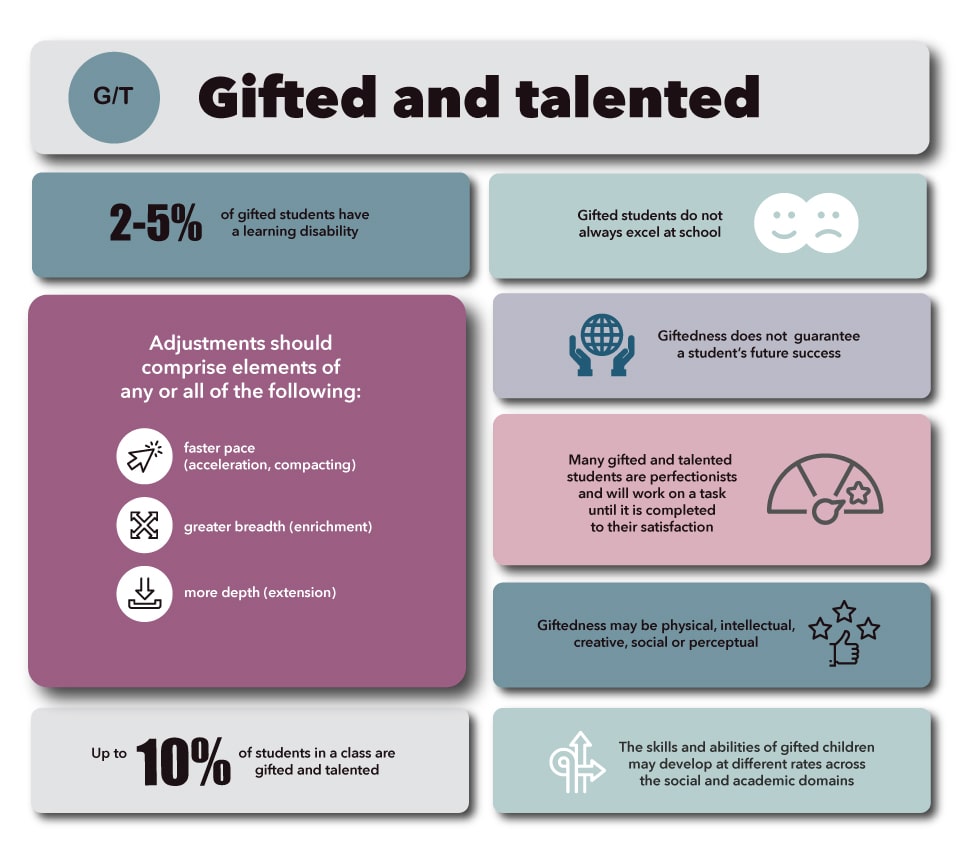
Schools typically use a combination of standardized test scores, teacher observations, and performance data to identify gifted and talented students. Academic assessments focus on intellectual abilities, while talent identification looks at specific skills in creative or physical domains. Multiple measures are recommended rather than relying on a single test or assessment method.
We should be cautious about using tests to measure academic aptitude. They may only consider one aspect of intelligence or not reflect the wide range of cognitive abilities we see in a mixed ability classroom. Differences in aptitude may be due to a student having English as an additional language or being particularly strong or weak in one or more of the intelligences being tested.
Terman (1995) found that character traits such as determination and persistence were a better indicator of future success than measures of intelligence, even in the case of children who were identified as being gifted. So although academic aptitude tests can be useful when information about prior attainment and grades aren't available, the results are more reliable for identifying underachievement rather than revealing academic talents.
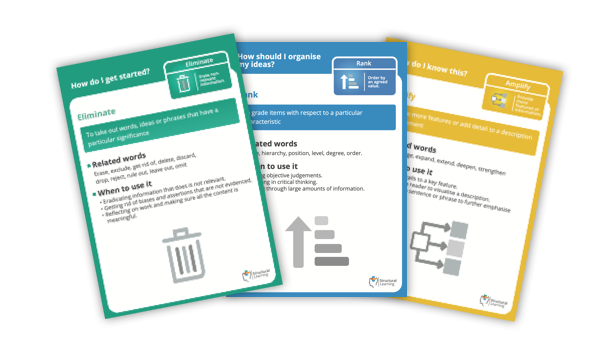
Effective teaching focuses on depth over speed, ensuring all students are challenged at their appropriate level rather than just accelerating gifted students through content. Using formative assessment helps teachers naturally stretch all pupils by identifying what each student needs to progress further. This approach prevents the creation of artificial divisions between gifted and other learners.
'How do you cater for your most able students?' is actually a dangerous question to ask and it is one we are asked too often in education. A far better question is: 'How do you cater for the needs of all your students?'. The answer to this question will include strategies that benefit all pupils, whereas strategies designed specifically to benefit the brightest students can often be detrimental to those who have not been identified as gifted and talented. This article will examine the following four examples and how they can be adapted to meet the needs of all pupils:
As a mathematician, I love differentiation! But as a pedagogical technique, I find it much more challenging. How do you design a differentiated curriculum? Is it better to differentiate by task or by outcome? If you differentiate by task, how do you decide who receives each task? If you differentiate by outcome, do you disadvantage students who work at a slower pace?
Rather than planning for differentiation, plan for learning. Go back to the pedagogical basics:
Planning an outstanding lesson will be a more effective use of your time than creating differentiated tasks or extension activities. These will emerge naturally in response to the formative assessment and feedback and you will avoid placing a preemptive ceiling on students who are not preselected for the extension work. A further benefit of using formative assessment to inform differentiation is that you utilize the expertise reversal effect: tasks requiring higher order thinking skills benefit students more if they have demonstrated mastery of the basics first.

Accelerated learning challenges highly able students through fast paced lessons and entering them for examinations early. It is an easy approach to implement and is effective if there is a viable option for further study after the course completion; often student will take a more advanced qualification in the same subject. The disadvantage of this approach is that it labels a group of students at the start of the year as more able than others in a subject, it then exaggerates the knowledge gap between this group and their peers, and makes membership exclusive. It is a deterministic approach that places a greater value on academic aptitude than effort.
A better alternative to accelerated learning is an extension of curriculum at every possible opportunity throughout the standard course: depth instead of breadth. Using tasks that require higher order thinking skills once new knowledge has been acquired is a simple way to challenge pupils. Examples of this include:
Taking this approach is more adaptive to pupils' individual needs and talents as the group of students taking part in these extension activities can vary from one lesson to the next.
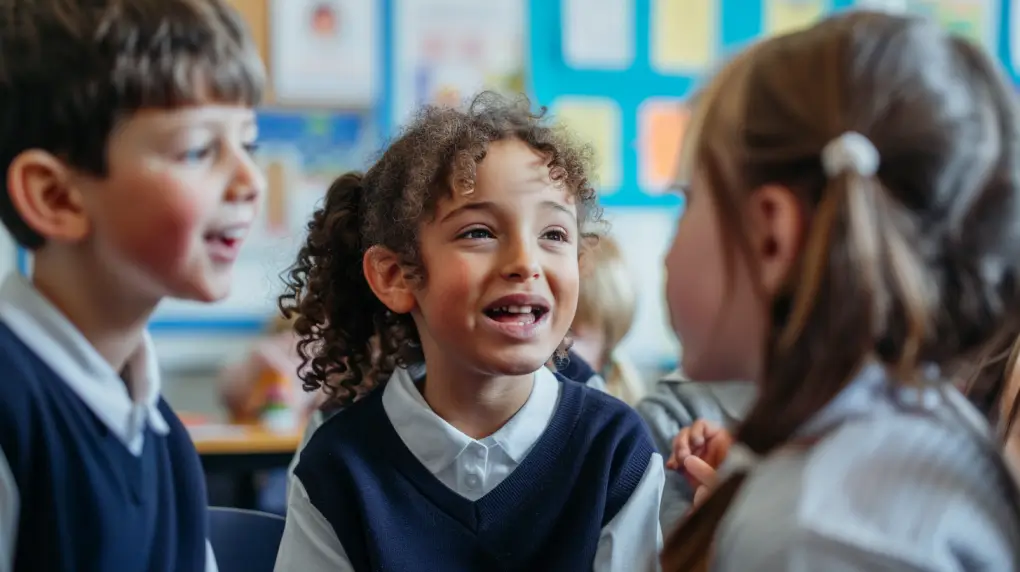
Streaming (or setting) is the process of putting pupils into different groups according to their ability level. Research has shown that streaming is a very effective way to enable gifted children to excel. Parsons and Hallam (2014) studied 19000 children over a five year period; they found that pupils in a 'top set' produced greater academic achievement than their peers who had the same scores on the initial cognitive ability tests but were placed in a mixed-ability group. However, it was only the most able children who benefited from streaming; students who were not placed in the top set performed worse than their peers of a similar ability level who were placed in a mixed-ability group.
Should you challenge the more able students through streaming or cater for the rest of the cohort by having mixed-ability sets? Both approaches benefit a different group of students. I do not believe that there is a correct approach for all schools or for all subjects. Being aware of the disadvantage associated with each option will allow you to put support in place for the group of students who do not directly benefit from the decision you make.
If you decide to use streaming, put support in place to challenge those students who are not in the top set.
If you decide to have mixed-ability classes, put support in place to challenge the most able pupils.
Gifted and talented programs or enriched programs can be an effective way to challenge gifted students. They are often accompanied by mentorship, opportunities for leadership, activities that are tailored to students' interests, and entry into external competitions. Although these programs are an effective way to encourage your brightest students to work together and develop the behaviors that lead to exceptional achievement, invitation to these programs is akin to labeling.
You risk over emphasizing the importance of innate intelligences and downplaying the role of effort. A simple solution to this is to rebrand your gifted and talented program as an extension of curriculum: a list of opportunities that are available to all pupils, which includes activities that require effort and more than one aspect of intelligence. For example:
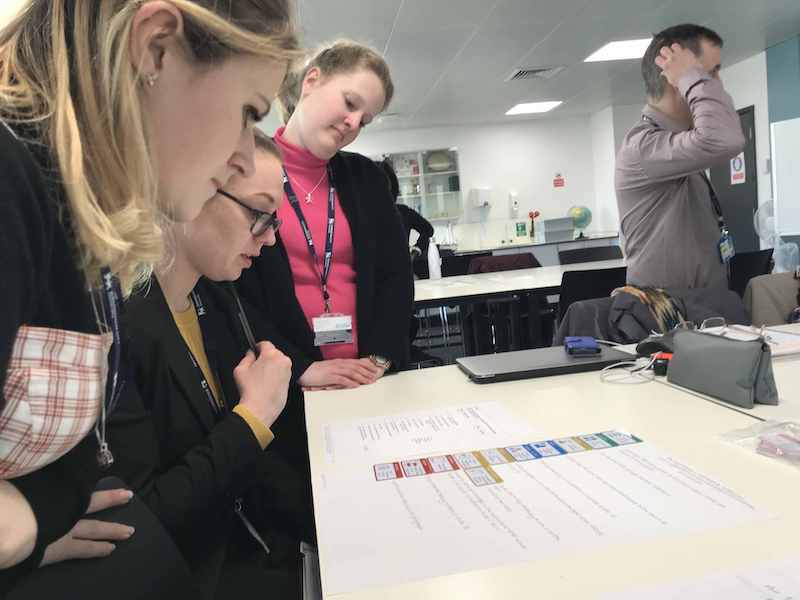
Research shows that creating separate extension tasks often limits learning, while inclusive high-quality teaching benefits all students including the most able. Effective strategies include using open-ended questions, encouraging deeper analysis, and providing opportunities for independent research within the main lesson. The focus should be on enrichment and depth rather than acceleration through curriculum content.
One of the greatest challenges teachers face when catering for their brightest students is that any gifted and talented education is only effective if pupils engage with it. Even pupils with the most exceptional ability will not reach their full learning potential if they do not take advantage of the opportunities offered to them.
What can we do to ensure that all pupils, including the most able, strive to achieve their potential? If there was a clear answer to this question, there would be no need for this article! Here are my thoughts.
Creating a culture that is grounded in the shared value of hard work and the merit of effort, is likely to lead to a range of positive behaviors that will result in increased attainment. This is not something that a single teacher can achieve; it must be a whole-school effort. Behaviours that align with the school's shared values should be celebrated and rewarded. Praise should be sincere, immediate and focused on effort rather than skill (Willingham, 2005).
Discipline needs to be consistent and used to teach positive behaviors rather than simply punishing negative ones. All members of the school community should embody and model the school's shared values; teachers can achieve this by continual professional development and making explicit the actions they are taking in response to this. As more members of the community internalize the shared values, more will follow. Staff and students are likely to conform to the new sets of behaviors because they either believe in the school's values (internalization), feel part of the community (identification), or simply because they want to receive the same rewards as others (gratification).
Everyone is more likely to work hard when they are motivated. This increased effort leads to greater success, which in turn leads to greater motivation (Zimmerman, 2000). Generating opportunities for success and emphasizing the role of effort will start this self-perpetuating cycle.
Teachers' mindsets can also have a significant affect on students' motivation. Dweck (2010) found that students' motivation, grades and achievement increased when their teachers possessed a growth mindset (a belief that intelligence can change) compared to a fixed mindset.
Encouraging students to become future-focused can help to increase their motivation. It can be particularly difficult for a student who is gifted and talented in many areas to know what they want to do with their talents in the future. Discussing their aspirations, the universities or colleges they are considering, or providing subject-specific mentorship and guidance, can have a positive affect on motivation.
Lastly, providing students with a brief rationale at the start of a lesson about the topic being studied or the activities being used, will often result in significantly greater engagement from all pupils (Jang, 2008).
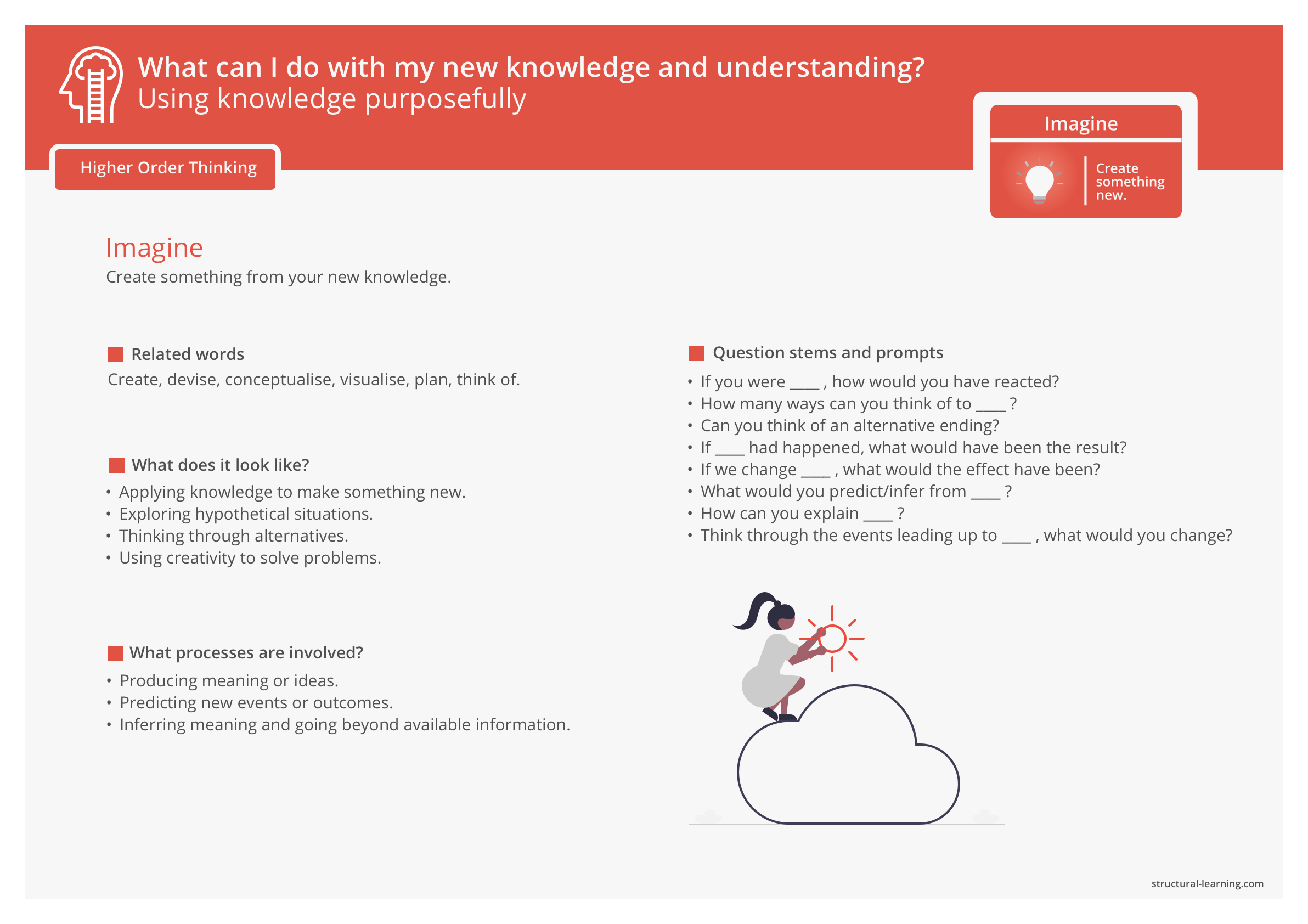
Outside of the classroom there are so many ways to challenge and inspire pupils of all abilities. Furthermore, Holdsworth et al (2017) found that extra-curricular activities foster resilience, which may contribute more to future attainment than innate intelligences.
Effective extra-curricular activities that can be used to challenge all pupils are:
Labeling pupils as 'gifted' can actually harm their achievement by creating fixed mindset thinking and limiting expectations for other students. The focus should shift from identifying the 'gifted few' to ensuring all students receive appropriately challenging education. This approach creates a more inclusive environment where every student can reach their potential.
It is not always helpful to think of gifted and talented pupils as a special cohort that need a separate provision; in fact, this approach could be damaging for students who have not been identified as being highly able based on their baseline assessments. It is most effective to focus on approaches that enable us to cater for the needs of all pupils, to which formative assessment and personalized feedback are essential.
The research discussed in this article has led to the following recommendations:

Essential reading includes research on growth mindset, differentiation strategies, and inclusive teaching practices that benefit all learners. Key texts examine the effectiveness of gifted programs and alternative approaches to meeting the needs of high-ability students. These resources help teachers develop evidence-based strategies for supporting all students effectively.
Here are five key studies on gifted and talented children and learners:
These studies collectively emphasize the complexity of identifying and supporting gifted and talented learners, highlighting the importance of considering cognitive abilities, academic talents, and social-emotional development in educational practices.

Teachers frequently ask about identification methods, appropriate challenge levels, and whether gifted students need separate programs or resources. Common concerns include how to differentiate effectively without creating additional workload or disadvantaging other students. Understanding these questions helps schools develop comprehensive policies for supporting all learners.
Q1: How can we identify a gifted child within our school?
Gifted children often exhibit a faster rate of learning, a vivid imagination, and advanced social skills compared to their peers. They may excel in one or more subjects and show a deep understanding of complex concepts. However, identification should not solely rely on academic performance. Observations from the class teacher, subject teachers, and parents, as well as the child's experiences at school, can provide valuable insights.
Q2: How can we cater to gifted children in schools?
Gifted children often benefit from a differentiated curriculum that challenges them and allows them to explore their interests in depth. This can be achieved through gifted programs, enrichment activities, or individualized learning plans. It's also important to provide opportunities for social and emotional development, as gifted children may face unique challenges in these areas.
Q3: How can we integrate the needs of gifted children into the school day?
Incorporating the needs of gifted children into the school day can involve a variety of strategies. This might include providing differentiated tasks during regular lessons, setting aside time for enrichment activities, or allowing for flexible pacing so that gifted students can move through the curriculum at a faster rate.
Q4: How can we support gifted children from disadvantaged backgrounds?
Gifted children from disadvantaged backgrounds may face additional barriers to their learning. Schools can support these students by providing access to resources, offering scholarships for enrichment activities, and creating a supportive and inclusive school environment. It's also important to maintain high expectations for these students and to provide them with the support they need to reach their potential.
Q5: What role do social skills play in the education of gifted children?
While gifted children often excel academically, they may face challenges in social situations. For example, they may struggle to relate to peers who are at a different developmental level. Schools can support the development of social skills through targeted interventions, opportunities for peer interaction, and guidance from school counselors or psychologists.
In the UK, the Department for Education defines gifted students as being in the top 5% for intellectual abilities. It is equally as important to cater for these students as it is to cater for the other 95%.
This article will examine the issues associated with the concept of gifted and talented children, whether differentiation and enriched programs of study are fit for purpose, and practical ways that we can ensure all students are making excellent academic progress.
'How do you cater for your most able students?'
If you are a teacher, I expect you have been asked this question many times in every year of your career. There is probably a box dedicated to it on the lesson plan proforma that comes out each time you are observed.
It's important to note that giftedness doesn't just refer to intellectual abilities, but also encompasses talents in other areas such as music, art, and athletics. Talented learners may not necessarily excel academically, but they have a natural aptitude and passion for a particular skill or subject.
As a teacher, it's important to recognize and nurture these talents as well, providing opportunities for these students to explore and develop their skills. By acknowledging and supporting gifted and talented learners, we can create a more inclusive and enriching learning environment for all students.
Common approaches to a gifted and talented education in schools, colleges and universities include:
There is a lot of pressure on secondary schools and colleges to cater for their brightest students, but some of the strategies employed to do this can unintentionally jeopardize the academic success of those students not identified as gifted and talented.
In the UK, the Department for Education defines gifted students as being in the top 5% for intellectual abilities. It is equally as important to cater for these students as it is to cater for the other 95%. This article will examine the issues associated with the concept of gifted and talented children, whether differentiation and enriched programs of study are fit for purpose, and practical ways that we can ensure all students are making excellent academic progress.
In the UK, the Department for Education defines gifted students as those in the top 5% for intellectual abilities, while talented refers to students with exceptional abilities in areas like music, art, or athletics. This distinction helps teachers identify different types of high-ability learners who may need specialized support. Understanding these terms is crucial for creating appropriate educational provisions for these students.
Shakespeare wrote: a rose by any other name would smell as sweet. This is not always the case!
There are so many terms used for students who have a particularly high academic aptitude according to baseline cognitive ability tests:
Would a gifted and talented student by any other name achieve as much? Probably not. Research suggests that they would actually achieve more without any label.
Mueller and Dweck (1998) found that performance on future tasks improves when teachers praise students' effort rather than their ability. Labels such as 'gifted and talented' emphasize the role of innate or natural talent, which can be interpreted by pupils as diminishing the importance of effort. Irrespective of ability level, these labels can decrease future academic success if pupils are aware of them.
However, the reverse is true when the labels are only made available to teachers. Rosenthal and Jacobson (1966) found that when teachers were told that they had a class of high achievers, the pupils made significantly more progress over a year compared to a control group with the same baseline data.
What can we learn from these two studies?

Schools typically use a combination of standardized test scores, teacher observations, and performance data to identify gifted and talented students. Academic assessments focus on intellectual abilities, while talent identification looks at specific skills in creative or physical domains. Multiple measures are recommended rather than relying on a single test or assessment method.
We should be cautious about using tests to measure academic aptitude. They may only consider one aspect of intelligence or not reflect the wide range of cognitive abilities we see in a mixed ability classroom. Differences in aptitude may be due to a student having English as an additional language or being particularly strong or weak in one or more of the intelligences being tested.
Terman (1995) found that character traits such as determination and persistence were a better indicator of future success than measures of intelligence, even in the case of children who were identified as being gifted. So although academic aptitude tests can be useful when information about prior attainment and grades aren't available, the results are more reliable for identifying underachievement rather than revealing academic talents.

Effective teaching focuses on depth over speed, ensuring all students are challenged at their appropriate level rather than just accelerating gifted students through content. Using formative assessment helps teachers naturally stretch all pupils by identifying what each student needs to progress further. This approach prevents the creation of artificial divisions between gifted and other learners.
'How do you cater for your most able students?' is actually a dangerous question to ask and it is one we are asked too often in education. A far better question is: 'How do you cater for the needs of all your students?'. The answer to this question will include strategies that benefit all pupils, whereas strategies designed specifically to benefit the brightest students can often be detrimental to those who have not been identified as gifted and talented. This article will examine the following four examples and how they can be adapted to meet the needs of all pupils:
As a mathematician, I love differentiation! But as a pedagogical technique, I find it much more challenging. How do you design a differentiated curriculum? Is it better to differentiate by task or by outcome? If you differentiate by task, how do you decide who receives each task? If you differentiate by outcome, do you disadvantage students who work at a slower pace?
Rather than planning for differentiation, plan for learning. Go back to the pedagogical basics:
Planning an outstanding lesson will be a more effective use of your time than creating differentiated tasks or extension activities. These will emerge naturally in response to the formative assessment and feedback and you will avoid placing a preemptive ceiling on students who are not preselected for the extension work. A further benefit of using formative assessment to inform differentiation is that you utilize the expertise reversal effect: tasks requiring higher order thinking skills benefit students more if they have demonstrated mastery of the basics first.

Accelerated learning challenges highly able students through fast paced lessons and entering them for examinations early. It is an easy approach to implement and is effective if there is a viable option for further study after the course completion; often student will take a more advanced qualification in the same subject. The disadvantage of this approach is that it labels a group of students at the start of the year as more able than others in a subject, it then exaggerates the knowledge gap between this group and their peers, and makes membership exclusive. It is a deterministic approach that places a greater value on academic aptitude than effort.
A better alternative to accelerated learning is an extension of curriculum at every possible opportunity throughout the standard course: depth instead of breadth. Using tasks that require higher order thinking skills once new knowledge has been acquired is a simple way to challenge pupils. Examples of this include:
Taking this approach is more adaptive to pupils' individual needs and talents as the group of students taking part in these extension activities can vary from one lesson to the next.

Streaming (or setting) is the process of putting pupils into different groups according to their ability level. Research has shown that streaming is a very effective way to enable gifted children to excel. Parsons and Hallam (2014) studied 19000 children over a five year period; they found that pupils in a 'top set' produced greater academic achievement than their peers who had the same scores on the initial cognitive ability tests but were placed in a mixed-ability group. However, it was only the most able children who benefited from streaming; students who were not placed in the top set performed worse than their peers of a similar ability level who were placed in a mixed-ability group.
Should you challenge the more able students through streaming or cater for the rest of the cohort by having mixed-ability sets? Both approaches benefit a different group of students. I do not believe that there is a correct approach for all schools or for all subjects. Being aware of the disadvantage associated with each option will allow you to put support in place for the group of students who do not directly benefit from the decision you make.
If you decide to use streaming, put support in place to challenge those students who are not in the top set.
If you decide to have mixed-ability classes, put support in place to challenge the most able pupils.
Gifted and talented programs or enriched programs can be an effective way to challenge gifted students. They are often accompanied by mentorship, opportunities for leadership, activities that are tailored to students' interests, and entry into external competitions. Although these programs are an effective way to encourage your brightest students to work together and develop the behaviors that lead to exceptional achievement, invitation to these programs is akin to labeling.
You risk over emphasizing the importance of innate intelligences and downplaying the role of effort. A simple solution to this is to rebrand your gifted and talented program as an extension of curriculum: a list of opportunities that are available to all pupils, which includes activities that require effort and more than one aspect of intelligence. For example:

Research shows that creating separate extension tasks often limits learning, while inclusive high-quality teaching benefits all students including the most able. Effective strategies include using open-ended questions, encouraging deeper analysis, and providing opportunities for independent research within the main lesson. The focus should be on enrichment and depth rather than acceleration through curriculum content.
One of the greatest challenges teachers face when catering for their brightest students is that any gifted and talented education is only effective if pupils engage with it. Even pupils with the most exceptional ability will not reach their full learning potential if they do not take advantage of the opportunities offered to them.
What can we do to ensure that all pupils, including the most able, strive to achieve their potential? If there was a clear answer to this question, there would be no need for this article! Here are my thoughts.
Creating a culture that is grounded in the shared value of hard work and the merit of effort, is likely to lead to a range of positive behaviors that will result in increased attainment. This is not something that a single teacher can achieve; it must be a whole-school effort. Behaviours that align with the school's shared values should be celebrated and rewarded. Praise should be sincere, immediate and focused on effort rather than skill (Willingham, 2005).
Discipline needs to be consistent and used to teach positive behaviors rather than simply punishing negative ones. All members of the school community should embody and model the school's shared values; teachers can achieve this by continual professional development and making explicit the actions they are taking in response to this. As more members of the community internalize the shared values, more will follow. Staff and students are likely to conform to the new sets of behaviors because they either believe in the school's values (internalization), feel part of the community (identification), or simply because they want to receive the same rewards as others (gratification).
Everyone is more likely to work hard when they are motivated. This increased effort leads to greater success, which in turn leads to greater motivation (Zimmerman, 2000). Generating opportunities for success and emphasizing the role of effort will start this self-perpetuating cycle.
Teachers' mindsets can also have a significant affect on students' motivation. Dweck (2010) found that students' motivation, grades and achievement increased when their teachers possessed a growth mindset (a belief that intelligence can change) compared to a fixed mindset.
Encouraging students to become future-focused can help to increase their motivation. It can be particularly difficult for a student who is gifted and talented in many areas to know what they want to do with their talents in the future. Discussing their aspirations, the universities or colleges they are considering, or providing subject-specific mentorship and guidance, can have a positive affect on motivation.
Lastly, providing students with a brief rationale at the start of a lesson about the topic being studied or the activities being used, will often result in significantly greater engagement from all pupils (Jang, 2008).

Outside of the classroom there are so many ways to challenge and inspire pupils of all abilities. Furthermore, Holdsworth et al (2017) found that extra-curricular activities foster resilience, which may contribute more to future attainment than innate intelligences.
Effective extra-curricular activities that can be used to challenge all pupils are:
Labeling pupils as 'gifted' can actually harm their achievement by creating fixed mindset thinking and limiting expectations for other students. The focus should shift from identifying the 'gifted few' to ensuring all students receive appropriately challenging education. This approach creates a more inclusive environment where every student can reach their potential.
It is not always helpful to think of gifted and talented pupils as a special cohort that need a separate provision; in fact, this approach could be damaging for students who have not been identified as being highly able based on their baseline assessments. It is most effective to focus on approaches that enable us to cater for the needs of all pupils, to which formative assessment and personalized feedback are essential.
The research discussed in this article has led to the following recommendations:

Essential reading includes research on growth mindset, differentiation strategies, and inclusive teaching practices that benefit all learners. Key texts examine the effectiveness of gifted programs and alternative approaches to meeting the needs of high-ability students. These resources help teachers develop evidence-based strategies for supporting all students effectively.
Here are five key studies on gifted and talented children and learners:
These studies collectively emphasize the complexity of identifying and supporting gifted and talented learners, highlighting the importance of considering cognitive abilities, academic talents, and social-emotional development in educational practices.

Teachers frequently ask about identification methods, appropriate challenge levels, and whether gifted students need separate programs or resources. Common concerns include how to differentiate effectively without creating additional workload or disadvantaging other students. Understanding these questions helps schools develop comprehensive policies for supporting all learners.
Q1: How can we identify a gifted child within our school?
Gifted children often exhibit a faster rate of learning, a vivid imagination, and advanced social skills compared to their peers. They may excel in one or more subjects and show a deep understanding of complex concepts. However, identification should not solely rely on academic performance. Observations from the class teacher, subject teachers, and parents, as well as the child's experiences at school, can provide valuable insights.
Q2: How can we cater to gifted children in schools?
Gifted children often benefit from a differentiated curriculum that challenges them and allows them to explore their interests in depth. This can be achieved through gifted programs, enrichment activities, or individualized learning plans. It's also important to provide opportunities for social and emotional development, as gifted children may face unique challenges in these areas.
Q3: How can we integrate the needs of gifted children into the school day?
Incorporating the needs of gifted children into the school day can involve a variety of strategies. This might include providing differentiated tasks during regular lessons, setting aside time for enrichment activities, or allowing for flexible pacing so that gifted students can move through the curriculum at a faster rate.
Q4: How can we support gifted children from disadvantaged backgrounds?
Gifted children from disadvantaged backgrounds may face additional barriers to their learning. Schools can support these students by providing access to resources, offering scholarships for enrichment activities, and creating a supportive and inclusive school environment. It's also important to maintain high expectations for these students and to provide them with the support they need to reach their potential.
Q5: What role do social skills play in the education of gifted children?
While gifted children often excel academically, they may face challenges in social situations. For example, they may struggle to relate to peers who are at a different developmental level. Schools can support the development of social skills through targeted interventions, opportunities for peer interaction, and guidance from school counselors or psychologists.